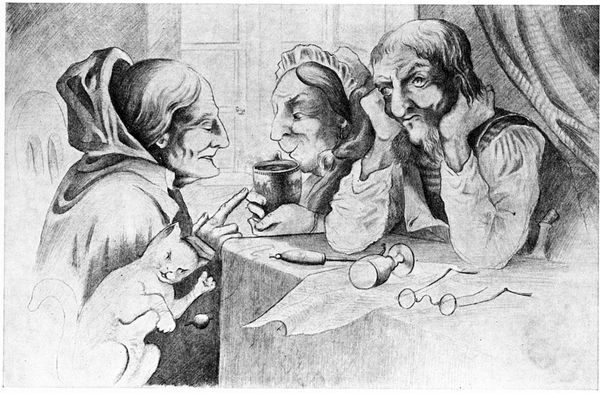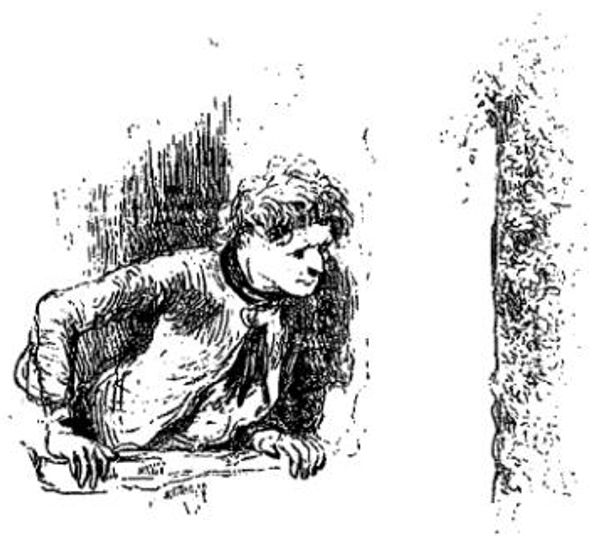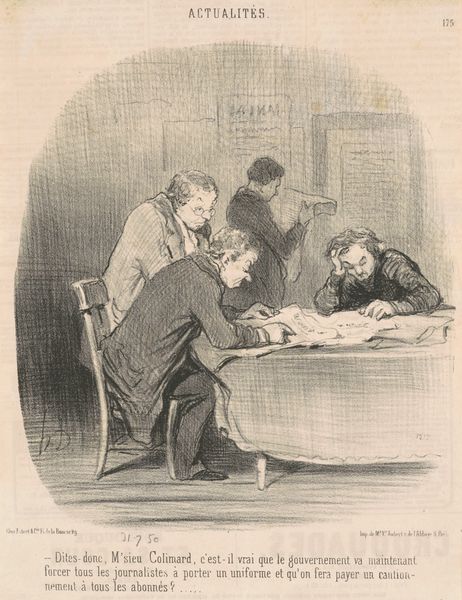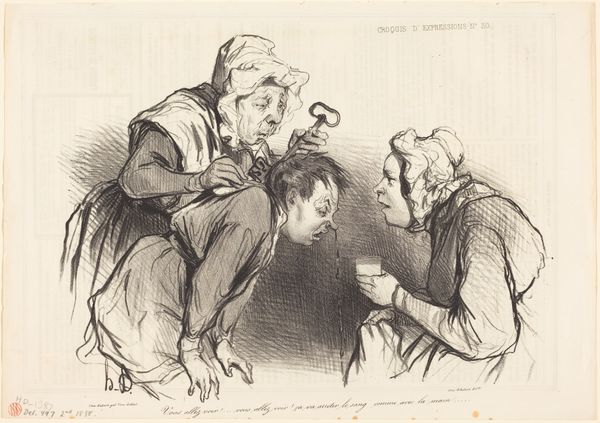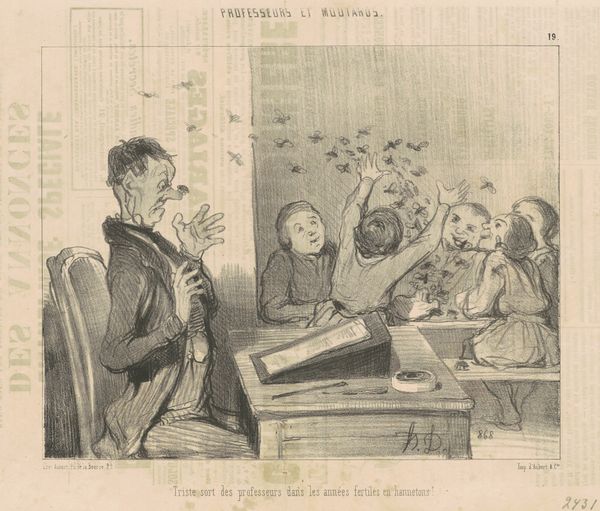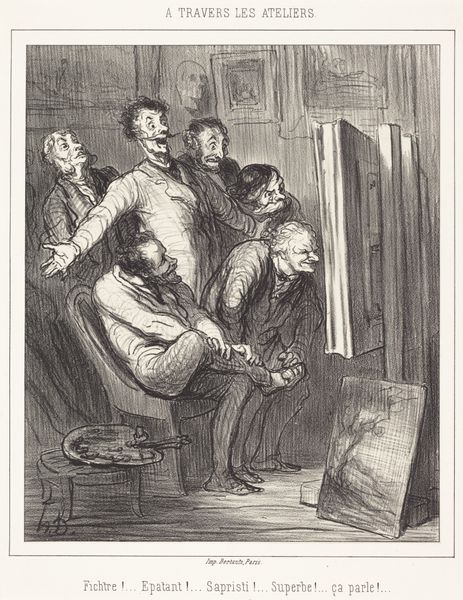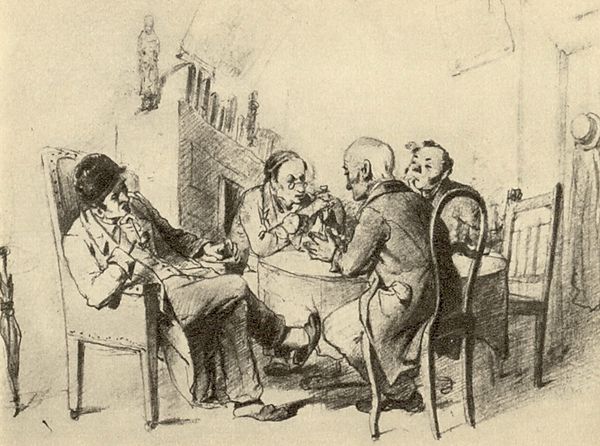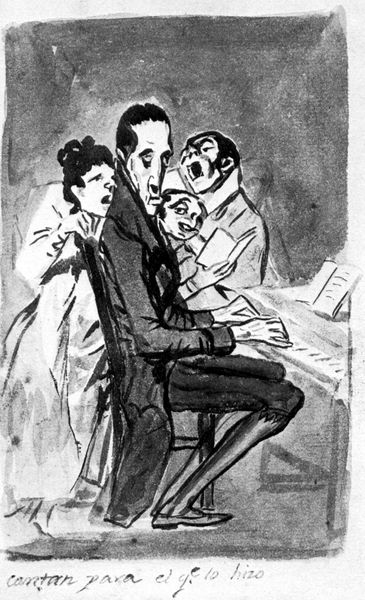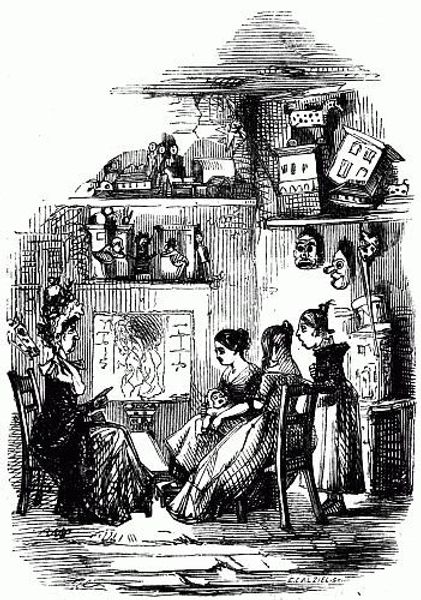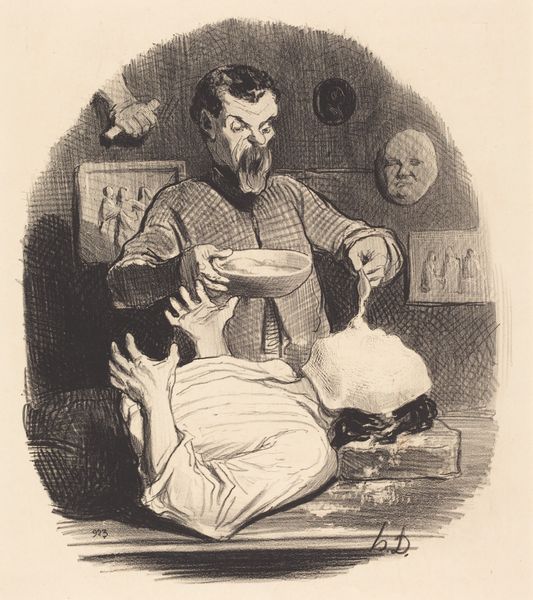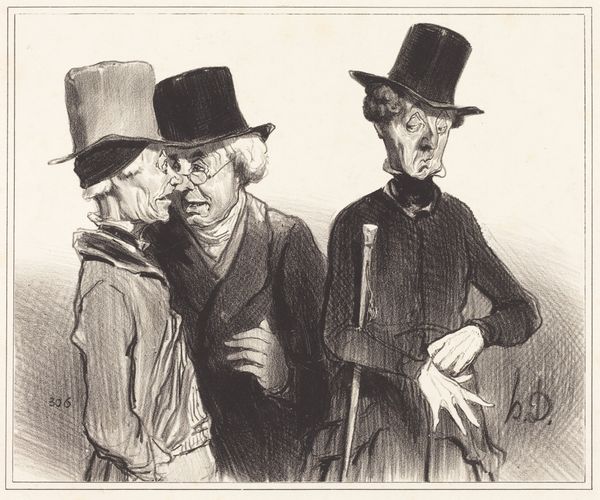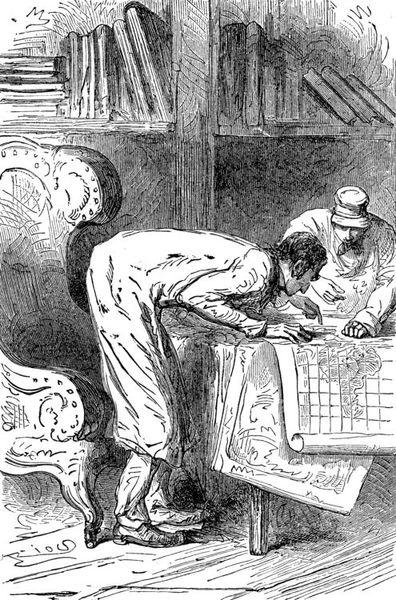
Copyright: Public domain
This illustration for The Tales of Hoffmann was created by Paul Gavarni, likely sometime in the mid-19th century, using engraving. The process involves cutting an image into a metal plate, inking the surface, and then wiping it clean so that ink remains only in the incised lines. Paper is then pressed against the plate to transfer the image. The result, as you can see here, is a composition of stark contrasts, built up with hatch marks that lend depth and texture. Engraving was crucial for mass media at this time. It allowed for the relatively quick reproduction of images for books and periodicals, circulating narratives widely. In Gavarni’s time, the rise of print culture coincided with rapid industrialization, and the two developments were deeply intertwined. Engravings like this one were a commodity, produced in multiples for a burgeoning reading public, and indicative of the growing role of visual media in shaping social attitudes and cultural values. Paying attention to the means of production, we gain insight into the print media and the rise of mass culture in 19th century Europe.
Comments
No comments
Be the first to comment and join the conversation on the ultimate creative platform.
